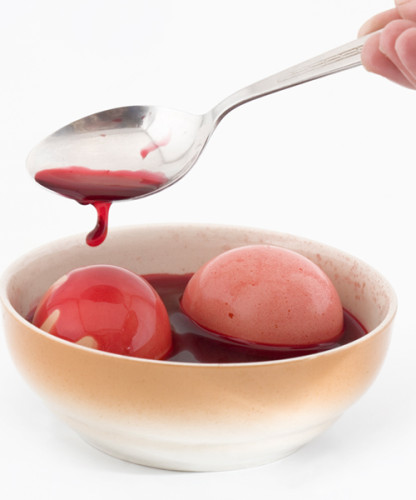DIY Egg Dye
Posted by: Liz Lichtenberger
Easter is right around the corner, and it’s time to get some eggs dyed. This year, why not skip the boxed egg dye and try making your own instead? It’s quick and easy and gives you a chance to put those DIY skills to good use.
Here’s what you’ll need:
- One dozen eggs
- Hot water
- White vinegar
- Food coloring
Start out by boiling the eggs and letting them cool completely. (Another option, if you want eggs you can save and use again next year, is to poke a small hole at the bottom of each egg and drain or blow them out to make them hollow.)
In a small bowl, mix hot water and vinegar. You’ll want about four parts water to one part vinegar. Add three or four drops of food coloring. Do this for each color.
To dye the eggs, simply place them in the dye mix and let them set for as long as you’d like. The longer they sit, the deeper their color will get. If an egg isn’t completely submerged, make sure to move around it frequently so the dye can evenly cover all parts of the egg.
When the egg is the color you’d like, remove it from the dye. Make sure you wipe up any drips, and then put it in the egg carton to dry completely.
Want to try something a little different? Try an ombre effect, where several eggs are the same color, but some are darker and some are lighter. To do this, you’ll want to leave each egg in the dye a little longer than the one before it so it gets a little darker.
Also, try dyeing one egg two colors by dipping half of the egg in one dye and then the other half in another. (Be careful not to let one color drip from the egg and into the other color’s bowl.) Or, if you want two shades of the same color, dye the egg as suggested above and then dip just half back into that same color, allowing that half to get darker.
A note about food coloring: You can use small bottles of food coloring, like what you find at the store, or if you want more natural food coloring, you can use different vegetables to create different colors. (For example, red/purple cabbage makes a light blue color, and fresh beets make a pink color.
If you go this route, you’ll want to boil the vegetable with water, and once it’s boiled, simmered and cooled, pour the mixture into a bowl (straining it to remove any chunks of vegetables) and add the vinegar, and then you can dye your hard-boiled eggs.


















Leave a Reply